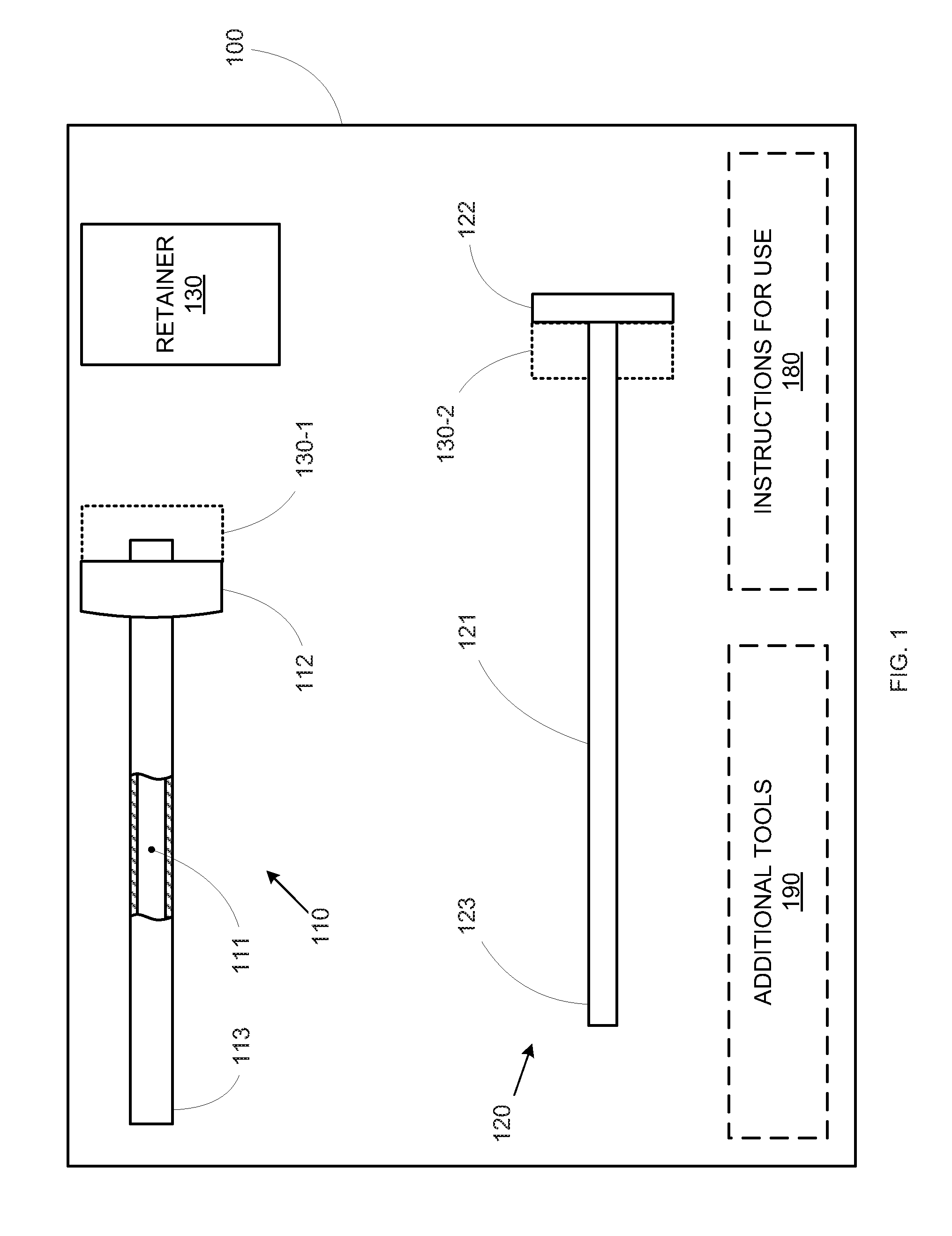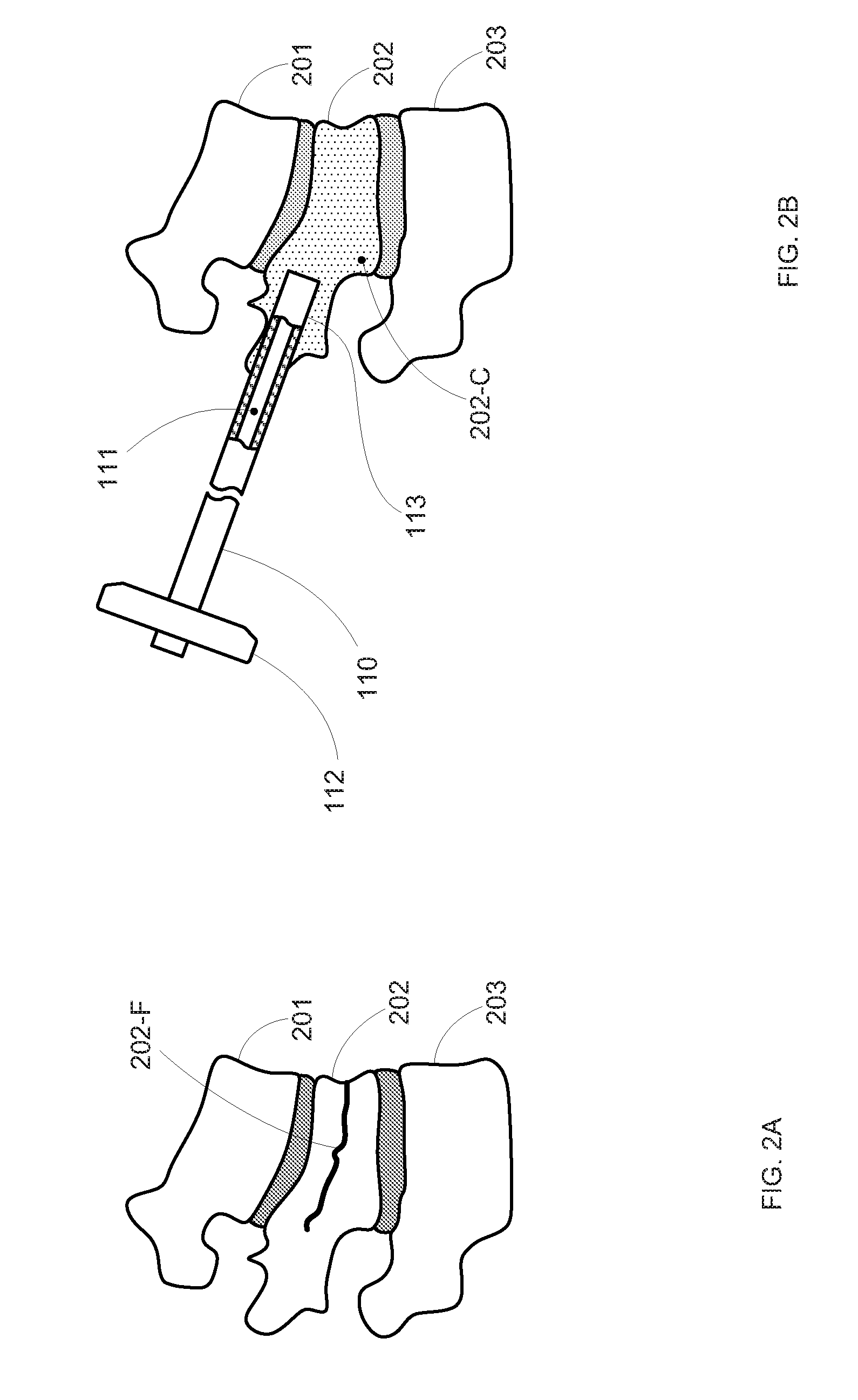Minimally Invasive Cement Delivery System Retainer
a cement delivery system and minimally invasive technology, applied in the field of minimally invasive surgical systems, can solve the problems of unique challenges that require new solutions, minimally invasive procedures are present, and minimally invasive procedures are typically more time-consuming than their open procedure analogues, so as to minimize the duration of the procedure, and reduce the risk of infection.
- Summary
- Abstract
- Description
- Claims
- Application Information
AI Technical Summary
Benefits of technology
Problems solved by technology
Method used
Image
Examples
Embodiment Construction
[0024]By providing a releasable retainer for coupling a bone filler material delivery nozzle and a working cannula, a minimally invasive surgical procedure can be performed from outside the fluoroscopic radiation field used for visualization. The retainer ensures that the delivery nozzle remains properly positioned with respect to the cannula during the procedure, yet allows simple disengagement / removal of the delivery nozzle to minimize procedure duration.
[0025]FIG. 1 shows a system 100 for use in a minimally invasive surgical procedure. System 100 includes a cannula 110, a bone filler material delivery nozzle 120 sized to fit through a lumen 111 of cannula 110, and a retainer 130 for securing delivery nozzle 120 with respect to cannula 110 during the surgical procedure. In various embodiments, system 100 can be a kit providing a prepackaged collection of items for performing the surgical procedure, including optional instructions for use 180 for describing the proper application o...
PUM
 Login to View More
Login to View More Abstract
Description
Claims
Application Information
 Login to View More
Login to View More - R&D
- Intellectual Property
- Life Sciences
- Materials
- Tech Scout
- Unparalleled Data Quality
- Higher Quality Content
- 60% Fewer Hallucinations
Browse by: Latest US Patents, China's latest patents, Technical Efficacy Thesaurus, Application Domain, Technology Topic, Popular Technical Reports.
© 2025 PatSnap. All rights reserved.Legal|Privacy policy|Modern Slavery Act Transparency Statement|Sitemap|About US| Contact US: help@patsnap.com



